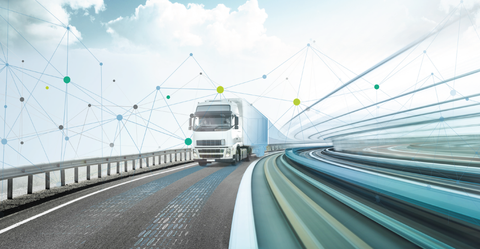Digital twin road - physical-informational representation of the "road of the future" system
Table of contents
Brief description
The mobility of people and goods is a central foundation of our modern society with increasingly global and diversely networked processes. Currently, mobility, especially with regard to road traffic, is confronted with global challenges (durability, safety, efficiency, ecology, costs, automation, etc.) that urgently require fundamental solutions.
In the approved SFB/TRR 339 (TU Dresden, RWTH Aachen), a spatially and temporally multidimensional, digital/virtual image (reality model in space and time) of vehicle, tires and road surface (concrete and asphalt) is to be developed and researched, taking into account the road pavements (integrated multifunctionality). The reality model combines all available and relevant information about the "road of the future" system from physical investigations and modeling as well as from informational and traffic data (sensor data, data models, etc.). It enables and requires interaction between the physical and structural engineering level and the information and traffic design level. This interactive reality model in space and time is referred to as a digital twin road and is used to analyze, control and predict the physical original (real road system consisting of vehicle, tires, roadway, nearby road space) by means of common interfaces. The expansion of the road into a high-tech platform is to be developed by means of the new, interdisciplinary research approach (civil engineering-informatics society).
The research approach is based on a three-stage development strategy: In phase I, the necessary sub-models are designed and developed. In phase II, the sub-models will be combined using common, standardized interfaces and integrated into a holistic model of the road system (digital shadow), which in phase III will allow the analysis and control of the road system using its own control components (digital twin). The current high level of development of the vehicle is to be achieved analogously for the road system, so that a new quality of integration of vehicles and infrastructure can also be achieved. The overarching aspects of law and sustainability are to be explicitly included in the design and development of the digital road twin right from the start. The digital twin road will lead to an intelligent, careful and sustainable use of the road infrastructure. Other expected results include pioneering condition forecasts, interfaces for local traffic control, the optimal synthesis of construction materials and structures, interfaces for automated driving and the reduction of emissions, e.g. by minimizing congestion scenarios or long-lasting road infrastructure components (use of resources).
Participating institutions
TU Dresden (applicant university, speaker university)
|
Department |
Faculty |
Institute/Chair |
|
Construction and |
Civil Engineering |
Institute of Construction Materials |
|
Institute of Geotechnical Engineering |
||
|
Institute of Urban and Pavement Engineering |
||
|
Institute of Structural Analysis |
||
|
Humanities and |
Department of Philosophy |
Institute of Political Science |
|
Engineering |
Electrical Engineering and |
Institute of Communication Technology |
|
Computer Science |
Institute of Software and Multimedia Technology |
|
|
Institute of Systems Architecture |
RWTH Aachen University (applicant university)
|
Faculty |
Institute/Chair |
|
Civil Engineering |
Geodetic Institute and Chair of |
|
Institute of Applied Mechanics |
|
|
Institute for Sustainability in Civil Engineering |
|
|
Institute of Road Engineering |
|
|
Mechanical Engineering |
Institute of Automotive Engineering |
|
Mathematics, Computer Science and |
Chair of Computer Science 11 - Embedded Software |
Homepage of the project: https://www.sfbtrr339.de
contact
 © Michael Kretzschmar
© Michael Kretzschmar
head of the institute
NameUniv.-Prof. Dr.-Ing. habil. Michael Kaliske
Send encrypted email via the SecureMail portal (for TUD external users only).

